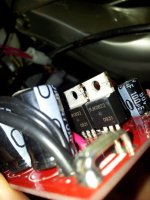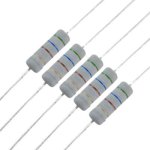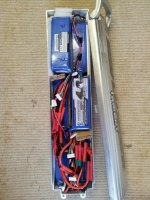You should be able to get away with using a couple of 8000Ah packs rather than four 4000Ah packs electrically, it'll just come down to whether they'll fit in your box, I think.
As miuan rightly says, I'm afraid Paul (cellman) is mistaken if he thinks that controller will be OK at much over 60V as it stands. The voltage regulator is an LM317K, which has an absolute maximum differential input voltage of 40V, so the max at its input would be around 52V. If the controller quiescent current is, say 50mA (0.05A, which is pretty typical) and as the resistor in there at the moment is 180 ohms, that means that the resistor will drop 180ohms x 0.05A = 9V. The max input voltage would then be 52V + 9V = 61V or so, higher than that risks cooking the regulator.
You can double check to see if the current I've used above is correct, by measuring the current the controller draws with everything connected but the throttle off. If the current is greater than 50mA, then the voltage drop across that 180 ohm resistor will also be greater. The calculation to get the voltage drop across the resistor is resistor value (in ohms) x quiescent current (in amps). This was pretty well documented here when folk first started modding controllers. Knuckles did some (fairly crude, it has to be said!) work on getting controllers to run reliably at higher voltages and wrote it up here: http://endless-sphere.com/forums/viewtopic.php?f=16&t=7361 (that thread relates to the old Infineon controllers, but they use exactly the same power supply as your controller).
[edited to correct an error on my part, as pointed out below by miuan]





